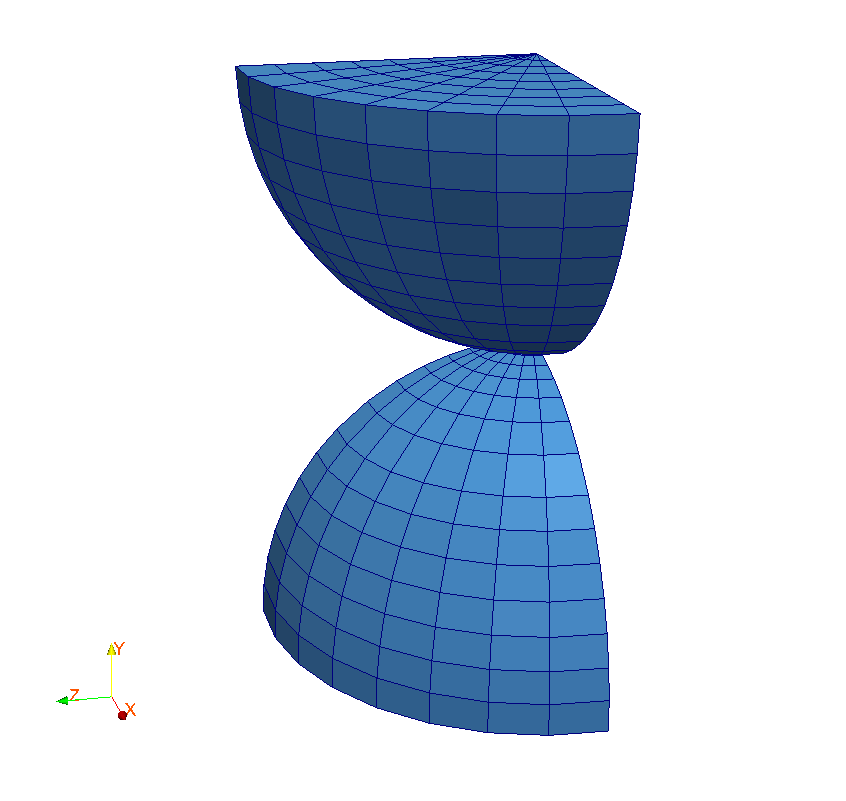10. Modeling I#
10.1. Characteristics of modeling#
3D modeling is used. A single calculation with the contact’s by default parameters is performed.
In this modeling, the points \(H\) and \({H}_{p}\) (respectively \(I\) and \({I}_{p}\)) are the same points (compared to those described in the geometry) but located on the two faces supporting the symmetry conditions.
10.2. Characteristics of the mesh#

Knots: 3698.
Meshes: 192 TETRA4, 5872 PENTA6, 224 PYRAM5.
10.3. Tested sizes and results#
First calculation (algorithm “CONTRAINTE”)
10.4. notes#
The results obtained in this modeling differ by up to 4% from the reference (modeling A): this is because the geometric nonlinearity of the contact is deliberately resolved roughly (criterion set at 5%). It can be seen that the radiating mesh makes it possible to maintain the axisymmetry of the problem, which is why the results obtained in each mesh that contributes to point \(G\) are similar.